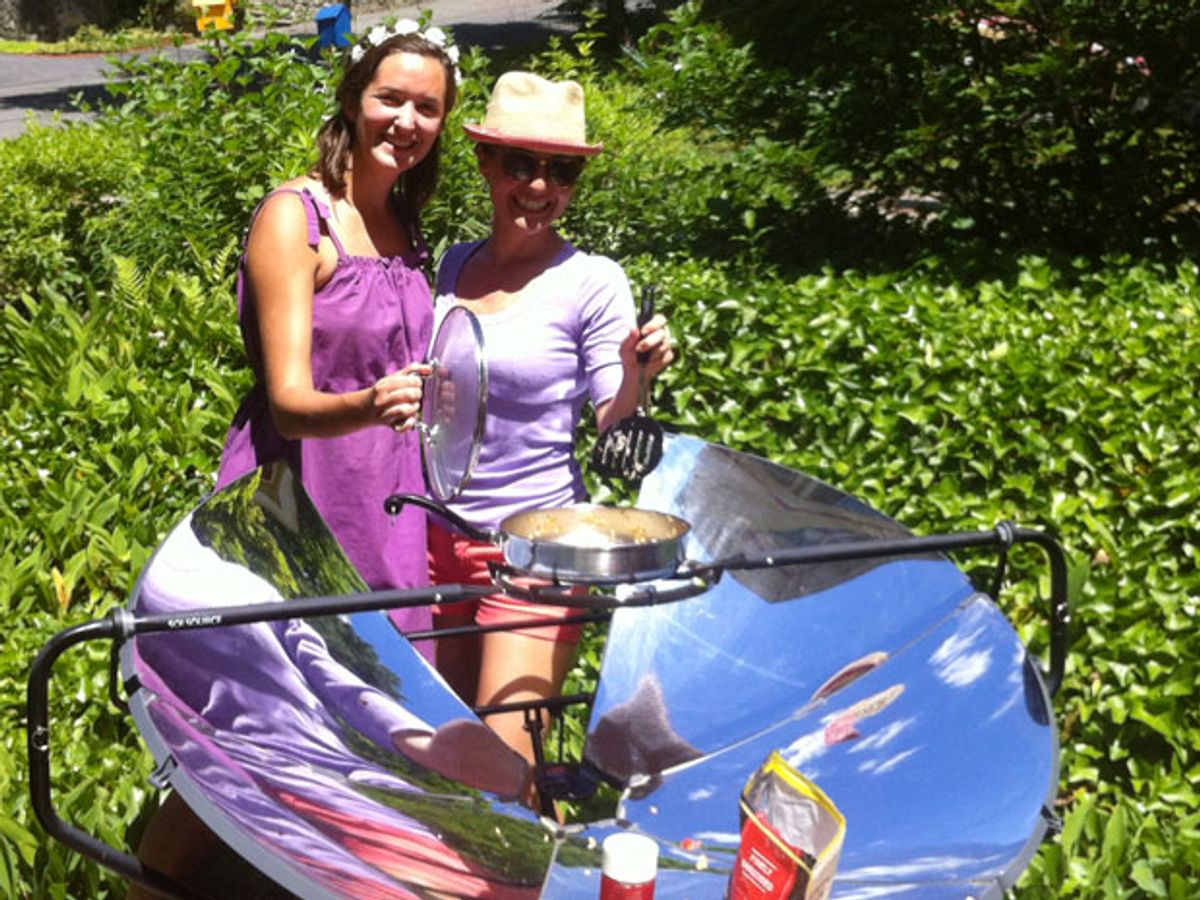Of all the innovations that could markedly benefit humankind, a reliable solar cooker remains one of the most imperative. Countless people across the developing world still cook their food by burning wood or even cow dung, causing respiratory problems and severe deforestation in some regions.
The quest for a practical solar cooker has gone on for decades and produced dozens of models ranging from $70 cheapies to $400 deluxe models. But none of them have caught on significantly for use in the developing-world because they can’t store heat. Without the ability to store heat, a cooker cannot be used, for example, on cloudy days.
But now a group based at the Norwegian University of Science and Technology (NTNU) in Trondheim is reporting a breakthrough in solar cookers. They say it will lead, within a year and a half, to the production of practical solar cookers that can store enough heat during a sunny day to work for an entire additional day, even if it is cloudy. The breakthrough was recognized with a US $8,000 award from the Norwegian Ministry of Petroleum and Energy this past August.
“Our vision is to solve problems in developing countries,” says Guro Grytli Seim, the CEO of a company, Morpho Solar, that was formed recently to capitalize on the Norwegian advance. She notes that nine Ph.D. students and 20 Master’s degree candidates worked on the heat-storage technology, with funding from the university, the Norwegian Investment Fund For Developing Countries, and the electric utility Trønder Energi. The system uses the principle of phase-change to store and release heat. The key ingredient is a salt with a melting temperature of 220 °C, Seim says. Sunlight concentrated by a parabolic reflector melts the salt; when heat is needed, the salt is allowed to solidify, which releases heat.
The system can have a thermal efficiency of 80 percent, Seim explains. For comparison, an electrical system based on photovoltaic cells and batteries would be only about 15- to 20-percent efficient.
The team also developed two different techniques to transfer heat from the parabolic collector to the cooking surface. These technologies, one based on steam and the other on oil, allow the sunlight-collecting parabolic dish to be outside a home and the cooking surface to be inside.
The project began in 2011 with Asfafaw Haileselassie Tesfay, a mechanical-engineering researcher at NTNU. Tesfay came to Norway from his native Ethiopia, which has a particular need for a solar cooker. Eighty five percent of Ethiopians lack access to electricity. And the country has been severely deforested: 40 percent of Ethiopia’s land was once covered by forest; the figure is now 4.6 percent.
Ethiopian cuisine, too, has a very specific requirement: a cooker that can reach a temperature between 200 °C and 250 °C. Such a temperature is needed to bake injera, a spongy pancake that is eaten with most meals in Ethiopia. Tesfay says the experimental cooker built by him and his colleagues can sustain a temperature of 220 °C (430 °F) for 24 hours, even if clouds roll in. This capability was demonstrated in March during trials with the cooker at Mekelle University in northern Ethiopia, he adds.
Seim says that Morpho Solar plans to complete a prototype of a commercial model in early 2015, and begin production in 2016. The company will begin selling the cooker in Europe and in the United States as well, under an agreement with Cambridge, Mass.-based One Earth Designs, one of the largest makers of solar cookers. Morpho’s strategy is to establish the product in the developed world before selling it at a lower price in developing countries, Seim explains. She is confident that it will appeal to environmentally conscious suburban families.
“It reduces your carbon footprint,” she notes. “And it’s fun. Many people value showing their kids that you can make food using only the sun. It’s less hassle, because you don’t have to buy charcoal or gas. You don’t have any recurring costs. We see that as a value proposition as well.”
This article was updated on 12 September 2014.
Glenn Zorpette is editorial director for content development at IEEE Spectrum. A Fellow of the IEEE, he holds a bachelor's degree in electrical engineering from Brown University.




